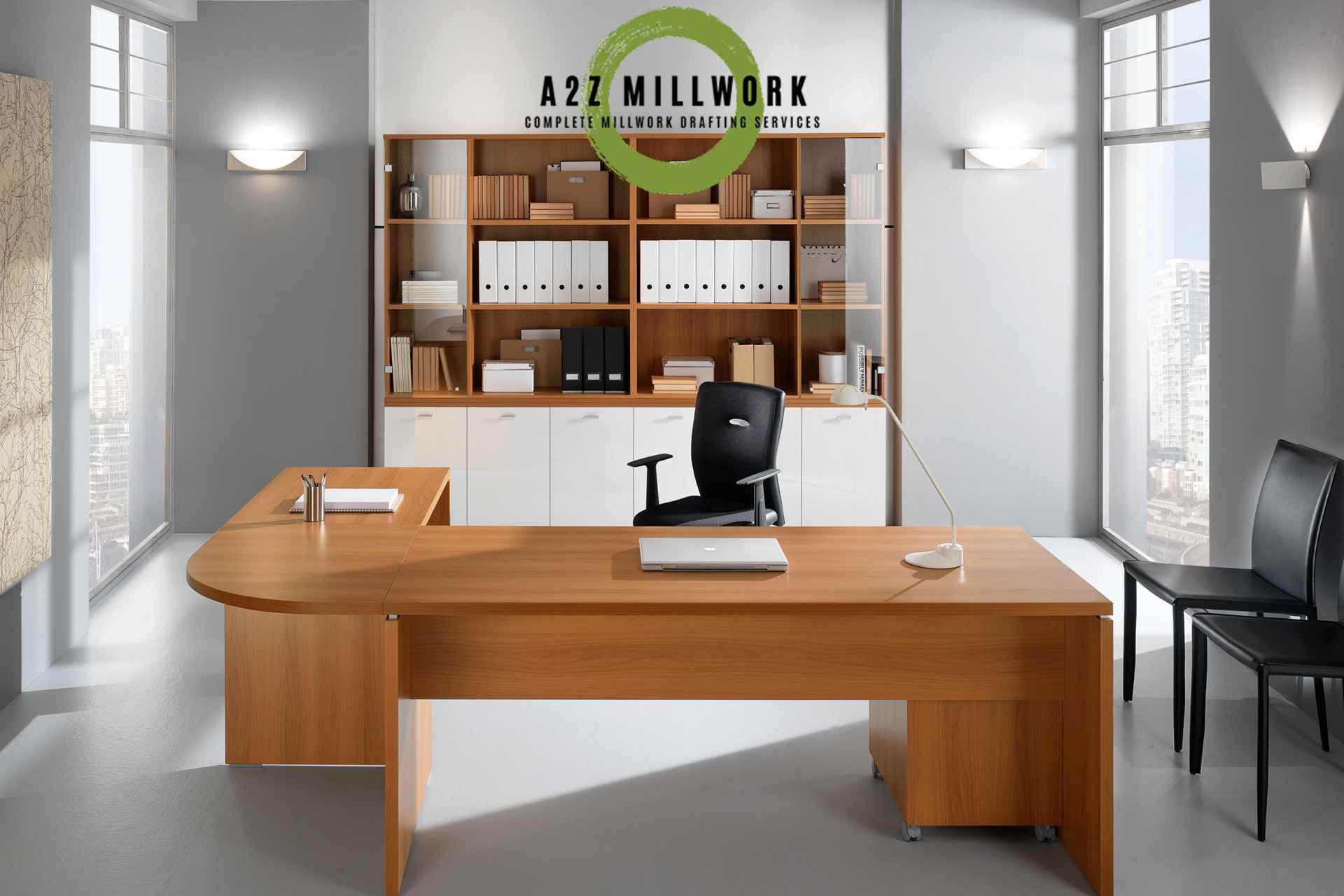Millwork is a critical element in creating an aesthetically pleasing and functional commercial space. The term millwork refers to the process of crafting custom-made interior or exterior architectural features, such as cabinets, shelves, countertops, and other ornamental details, from raw materials like wood, plastic, or metal.
Functionality:
Millwork in commercial spaces is often used to create functional and practical spaces that meet the needs of the business. For example, reception desks are often custom-designed to accommodate the needs of the receptionist and provide a welcoming environment for visitors. Cabinets and storage units are also custom-designed to meet the needs of the business, whether it is to store inventory or display products.
Aesthetics Millwork:
Aesthetics Millwork creates specific commercial spaces. From modern to traditional, millwork designs match the overall style of the business. Aesthetics Millwork creates a specific atmosphere, such as warm and cozy or sleek and modern. In retail spaces, millwork showcases the products and creates a unique customer shopping experience.
Branding:
Creating a specific aesthetic, millwork is also used to reinforce a brand’s identity. For example, custom-designed cabinetry and displays can incorporate a business’s logo or colors. It creates a cohesive and recognizable brand identity that customers can quickly identify with.
Durability:
Commercial spaces are often high-traffic areas that experience a lot of wear and tear. Millworks are designed to be durable and withstand the daily use of commercial space. High-quality materials and expert craftsmanship ensure millwork lasts for years and requires minimal maintenance.
Flexibility:
Millwork is also incredibly flexible and designed to meet the unique needs of a space. Custom-designed millwork is used to maximize space and create storage solutions that meet the needs of the business. In addition, Millwork designs are flexibly easy to reconfigure the business change needs.
Does office space consider commercial Millwork drafting?
Yes, office space design often considers commercial millwork drafting as it plays an important role in creating custom-built fixtures, furniture, and cabinetry that can enhance a workspace’s functionality and aesthetic appeal. Commercial millwork drafting involves creating detailed drawings and plans to construct custom millwork, such as reception desks, bookcases, and storage units. These fixtures can fit the office space’s specific needs, improving organization, maximizing storage, and enhancing the overall design. By incorporating commercial millwork drafting into office space design, businesses can create a unique and customized workspace that reflects their brand and improves employee productivity and satisfaction.
Commercial spaces:
Commercial spaces refer to buildings or properties primarily used for business purposes. Examples of commercial spaces include offices, retail stores, restaurants, warehouses, and factories.
Office space designs are created for companies to perform their day-to-day operations, meetings, and collaborations. Retail spaces to display and sell goods to customers—restaurants for dining and hospitality services. Warehouses are used for storing and distributing goods, while factory spaces are used for manufacturing products.
Commercial spaces are an essential part of the economy and provide employment opportunities for people. In addition, commercial Millwork Drafting is a hub for entrepreneurs to establish and grow their businesses, contributing to the overall economy’s growth.
Conclusion:
Millwork plays a critical role in commercial spaces. It provides functionality, aesthetics, branding, durability, and flexibility essential to creating a thriving business environment. From reception desks to cabinetry, millwork is an integral part of commercial design that can help businesses build a unique and welcoming space that meets their specific needs.





